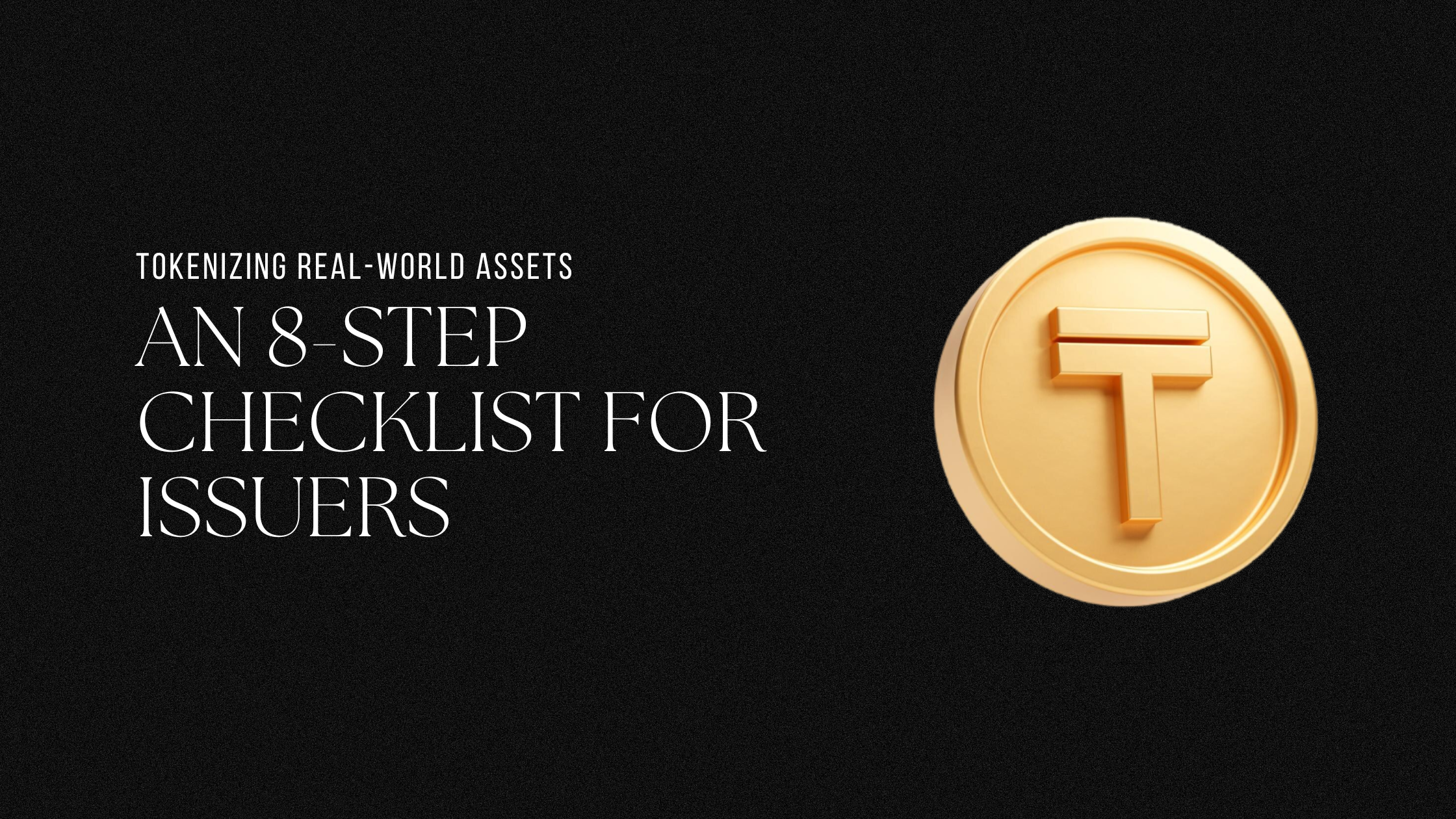Tokenizing Real-World Assets: An 8-Step Checklist for Issuers
 Rose Mason
Rose Mason
Tokenization is changing the traditional concepts of ownership and investment in real-world assets. Issuers are now using Blockchain Technology to create Digitial tokens representing freestanding geographic locations, providing an ample access to liquidity, availability, and other factors never offered before. Finally, we provide a detailed step by step guide in the form of a checklist for issuers looking to undertake the process of tokenization.
1. Identify the Asset & Assess Feasibility
The initial step involves identifying a suitable asset for tokenization and ascertaining its feasibility. Be it real estate, fine arts or even intangible asset like intellectual property the asset must be ownership driven and exhibit high demand in the market. Firstly carry out and analysis to check if the asset possesses any challenges regarding its liquidity ,any legal barriers or how versatile it is to be integrated within some existing tokenization infrastructure.
2. Conduct Legal and Compliance Review
Conformance with laws and regulations is essential for successful tokenization. Issuers need to ensure compliance with local and several international laws such as KYC and AML. Engaging legal counsel can assist in establishing the framework regarding investor rights and also act as a protective measure against any regulatory risks.
3. Choose the Right Tokenization Platform
In real world asset tokenization services It is important to have a strong tokenization platform that one can utilize. Consider things such as the transaction speed, cost, scalability, security, and other features before making a decision. The blockchain technologies like Ethereum and Polygon are widespread because of their flexibility. Also, look for a platform that is capable of smart contracts, compliance tools, and even offers features such as fractional ownership for investors.
4. Define Token Economics
Creating the economic structure of the token is a significant stage of the designing process. Identify the price, supply, and distribution strategy of the token aimed at guaranteeing the liquidity and trust from the investors in the long run. Think about including mechanisms for example dividends and or buybacks to add more value and motivate involvement.
5. Develop & Audit Smart Contracts
The basis of token based systems are smart contracts. They facilitate automated processes such as transfer of ownership, transactions and compliance. It is therefore imperative to partner with professional blockchain developers to build smart contracts that have security features and conduct thorough tests to obliterate any weaknesses.
6. Design Market Strategy & Launch
Proper implementation of a marketing strategy guarantees the achievement of your objectives with regards to the launch of a token. Concentrate on making the potential users aware of the advantages of the assets that are tokenized and create interest in the activities through marketing. Introduce your token through a regulatory friendly Initial Token Offering (ITO) or Security Token Offering (STO) in order to reach the suitable audience.
7. Conduct Token Offering (ITO or STO)
The token offering is a stage in which investors can acquire your tokens. Depending on your asset class and other regulatory considerations, choose between an Initial Token Offering or a Security Token Offering. Make sure that the procedure is open, meets standards, and adds worth to early investors in order to establish confidence and focus.
8. Manage Post-Launch Activities
The process of tokenization does not finish upon launch. Post-launch strategies are equally important in preserving investor’s confidence and ensuring compliance with regulations. Inform investors on a regular basis, facilitate secondary market transactions, and adjust to changing legal environments. They also need to be proactive in managing relationships and trust over time, which is critical for achieving and sustaining success.
Conclusion
In the modern age, assets can be tokenized and this process compliments investments that are more of traditional classic types. In this 8-step checklist, issuers can make sure that the tokenization process is carried out without hitches, compliance and successful. There is however a need to apply the right technology to manage the assets of the mortgage borrowers as this will create new investor liquidity and new opportunities for the issuers, changing the asset management and trading business all over.
Subscribe to my newsletter
Read articles from Rose Mason directly inside your inbox. Subscribe to the newsletter, and don't miss out.
Written by

Rose Mason
Rose Mason
I am a rosemason with a deep expertise in blockchain technology. I am a seasoned consultant who specializes in helping businesses and organizations harness the power of decentralized systems. My experience spans across various blockchain platforms, focusing on developing and implementing innovative solutions such as tokenization, smart contracts, and decentralized applications (dApps). Known for his strategic insight and technical knowledge, and am dedicated to guiding clients through the complexities of blockchain, ensuring seamless integration and unlocking new growth opportunities in this rapidly evolving space.